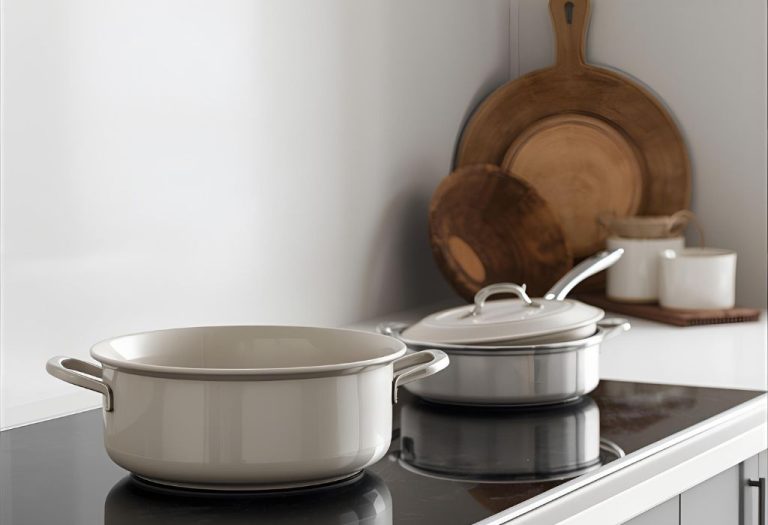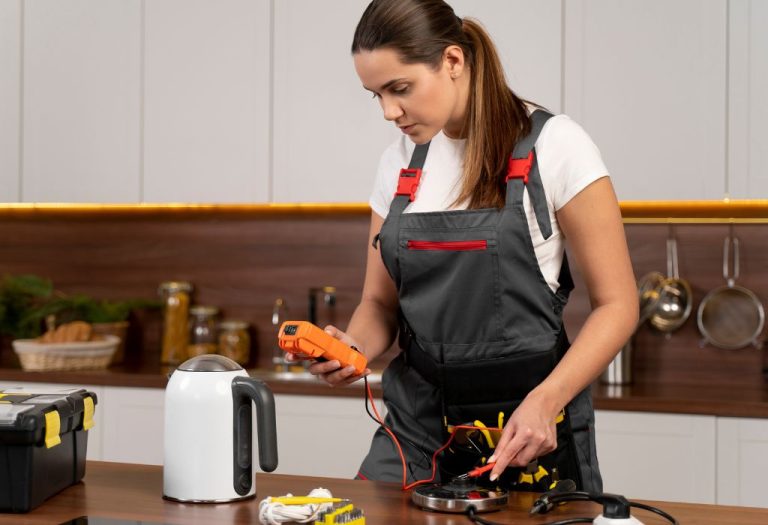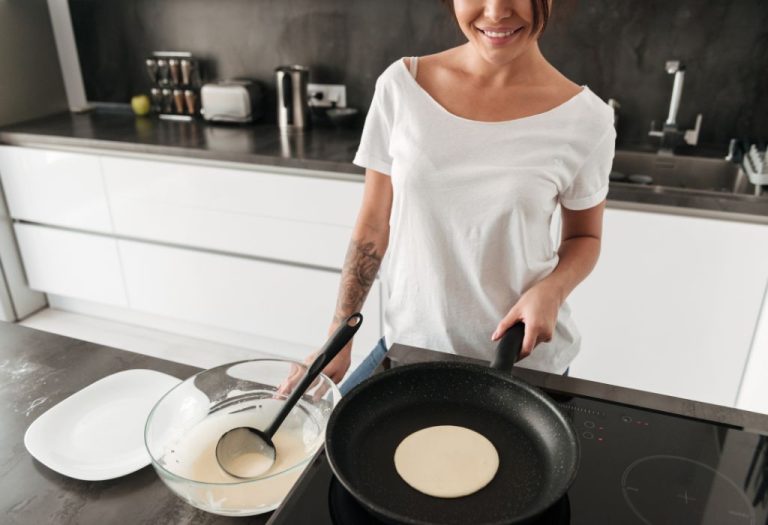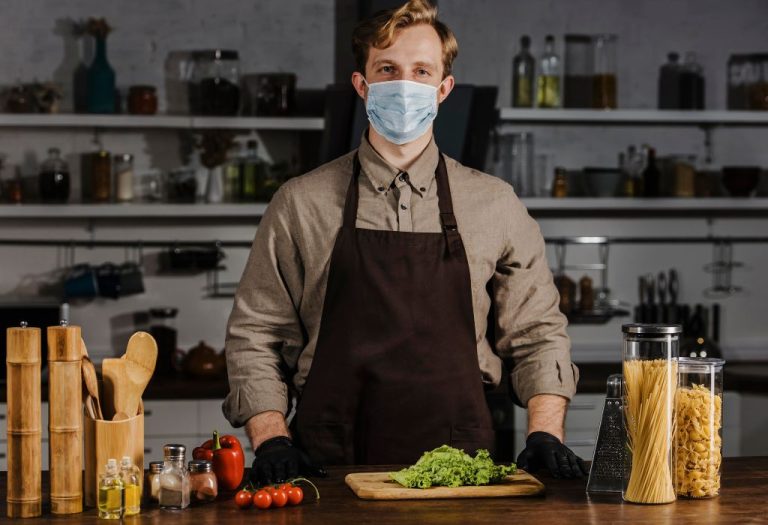The search for safer cookware has changed how families choose pots and pans. Concerns about PFAS and PFOA chemicals in older nonstick coatings have pushed buyers toward alternatives like granite ceramic cookware. But the big question remains: is granite ceramic cookware safe for everyday cooking?
Reports show that PTFE coatings begin degrading at around 500°F (260°C), releasing potentially harmful fumes (source). This has made terms like PFAS-free, PFOA-free, and lead-free critical for health-conscious consumers looking for safer options.
The problem is that “granite ceramic” is not a single material. Some pans use porcelain-enamel fused to steel, others feature ceramic-coated aluminum, and some are still PTFE pans with granite patterns. Their safety depends on coating type, quality, and how they are used.
With U.S. cookware sales topping $4.4 billion annually (source), demand for clear, science-backed answers is growing. Families want cookware that is durable, non-toxic, and reliable for daily cooking.
What Granite Ceramic Cookware Really Means
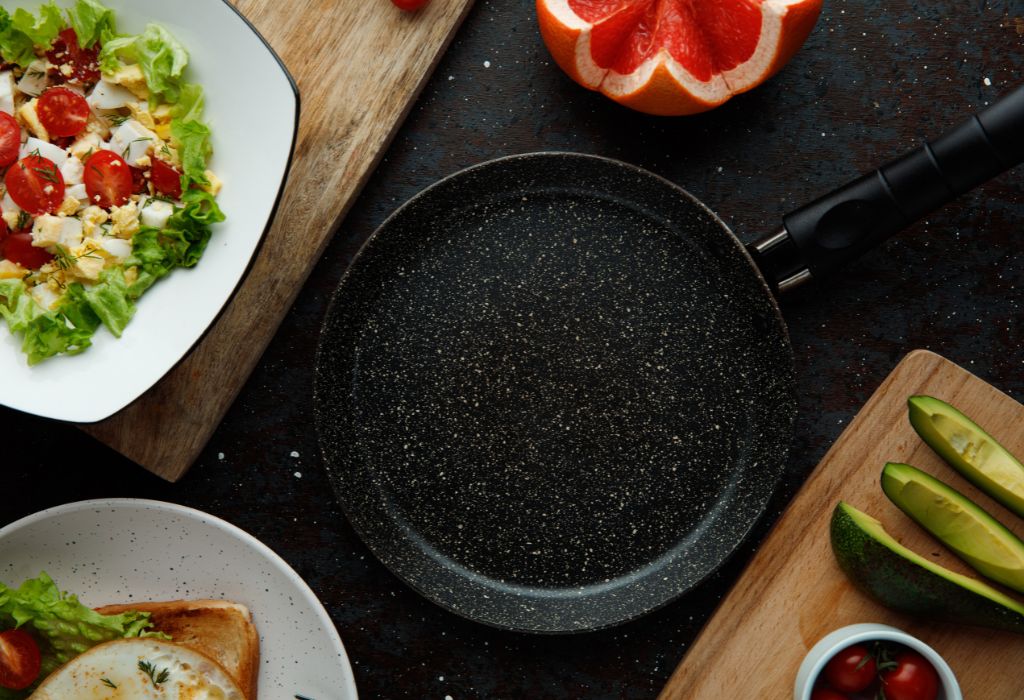
Granite ceramic cookware is not one single product but a category that includes different materials and coatings. The name often creates confusion because “granite” typically refers to appearance rather than composition.
Some products feature porcelain enamel fused to steel, creating a glass-like, inert surface that resists staining and does not react with food. Others use ceramic-coated aluminum, providing a smooth, PFAS-free cooking surface with better heat distribution.
There are also pans labeled as “granite” that use traditional PTFE coatings but with a granite-like look. These can be safe if used correctly but may degrade when overheated above 500°F (260°C).
Understanding these differences is essential because safety claims depend on the type of coating, the quality of materials, and whether the cookware meets certifications like PFAS-free, PFOA-free, lead-free, and California Proposition 65 compliance.
Choosing certified products from reputable brands ensures you get cookware that combines durability, non-toxic surfaces, and safe everyday cooking performance.
Is Granite Ceramic Cookware Safe? The Science Explained
The safety of granite ceramic cookware depends on the coating materials, heat resistance, and manufacturing standards. Modern porcelain-enamel cookware uses a glass-like surface that is naturally lead-free, cadmium-free, and non-reactive, making it safe for everyday cooking when handled correctly.
Ceramic-coated aluminum pans labeled as PFAS-free and PFOA-free are also considered safe because the sol-gel ceramic layer does not contain the chemicals linked to older nonstick pans. These coatings remain stable as long as they are not exposed to extremely high heat or abrasive cleaning methods.
However, some “granite” pans still use PTFE coatings with a granite-like design. PTFE itself is not harmful under normal cooking conditions, but overheating above 500°F (260°C) can cause it to break down, producing fumes that are unsafe for humans and especially dangerous for birds.
Safety certification plays a critical role. Cookware that meets FDA guidelines or California Proposition 65 standards ensures that heavy metals, harmful chemicals, and toxic residues remain within safe limits for consumer use.
When consumers choose certified granite ceramic cookware and follow proper cooking practices, they minimize risks while enjoying durable, non-toxic, and easy-to-clean pans for daily meals.
Benefits of Granite Ceramic Cookware
Granite ceramic cookware has become popular because it combines non-toxic materials with modern cooking convenience. Most brands promote PFAS-free, PFOA-free, and lead-free coatings, giving families peace of mind about everyday cooking safety.
The non-reactive surface ensures that food flavors stay pure without any chemical leaching, even when cooking acidic dishes like tomato sauce. This makes granite ceramic cookware an excellent choice for health-conscious households.
The even heat distribution offered by aluminum or steel bases reduces hot spots, helping food cook consistently while using less oil or butter. This supports healthier cooking habits without sacrificing taste or performance.
Another advantage is the easy-to-clean surface. Food releases smoothly from ceramic coatings, so scrubbing is minimal, and hand washing preserves the cookware’s longevity. Many models are also oven-safe and induction compatible, adding versatility to the kitchen.
Finally, the stylish granite-like appearance blends safety with aesthetics, giving modern kitchens a cookware option that looks as good as it performs.
Drawbacks and Risks of Granite Ceramic Cookware
While granite ceramic cookware offers many advantages, it is not without drawbacks. The most common issue is durability, as ceramic coatings can wear down faster than stainless steel or cast iron, especially with heavy use.
Exposure to high heat above 500°F (260°C) can cause coatings to degrade over time. Overheating may not release toxins in PFAS-free cookware, but it often leads to chipping, cracking, or reduced nonstick performance.
Some low-cost “granite” pans may lack clear safety certifications for lead, cadmium, or PFAS. Choosing trusted brands that meet FDA or Proposition 65 standards is essential to ensure long-term safety and reliability.
Improper cleaning with abrasive scrubbers or using metal utensils can scratch the coating, shortening the lifespan and affecting the cookware’s performance. Handwashing with soft sponges and mild detergents is strongly recommended.
Compared to stainless steel or cast iron, most granite ceramic pans have a shorter lifespan and may require replacement every few years, particularly frying pans used frequently at high temperatures.
How to Use Granite Ceramic Cookware Safely
Proper use of granite ceramic cookware is essential to maintain its safety and longevity. Always cook on low to medium heat to prevent overheating, which can damage the coating and shorten its lifespan.
Avoid using metal utensils that can scratch or chip the nonstick surface. Instead, choose silicone, wood, or plastic utensils to keep the coating smooth and intact over time.
Cleaning methods also matter. Handwash the cookware with mild soap and a soft sponge rather than harsh scrubbers or dishwashers, which can gradually wear down the protective layer.
Storing cookware properly prevents surface damage. Place protective liners or stack pans carefully so the coating does not rub against other cookware or lids.
Finally, replace any pan that shows deep scratches, peeling, or chipping. Damaged coatings compromise performance and may affect safety, even in certified, lead-free cookware.
How Granite Ceramic Compares to Other Cookware Types
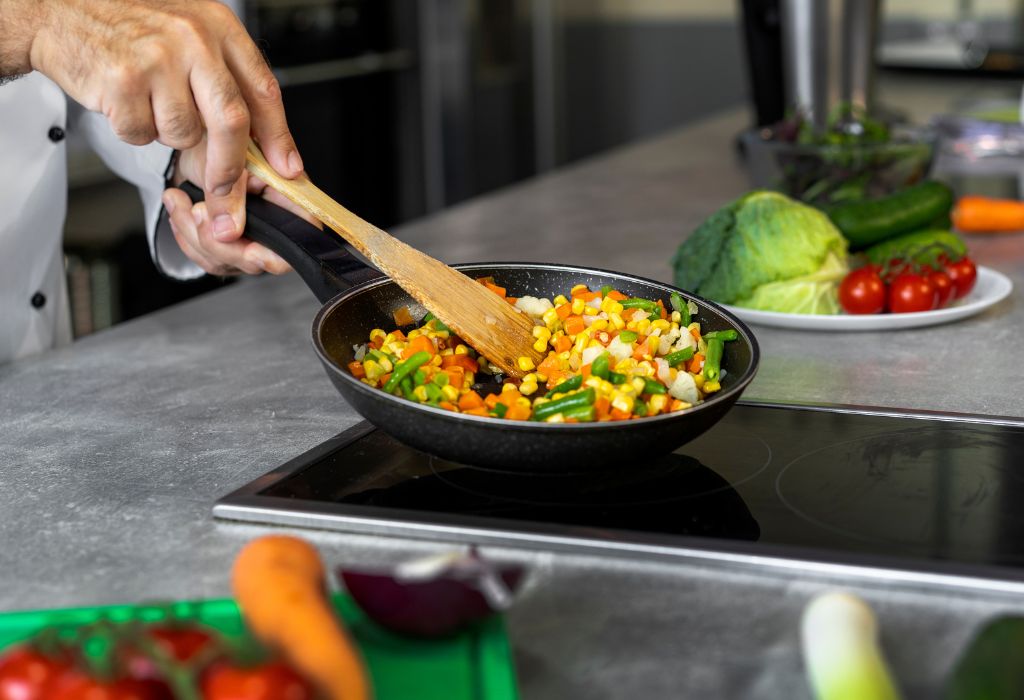
When comparing granite ceramic cookware to stainless steel, cast iron, or traditional nonstick pans, the differences often come down to safety, durability, and convenience. Stainless steel remains the most durable option, lasting for decades without coatings to wear down.
Cast iron stands out for its high heat tolerance and natural nonstick properties when seasoned correctly. However, it requires regular maintenance and is much heavier than granite ceramic cookware.
Traditional PTFE nonstick pans deliver excellent food release but can degrade if overheated above 500°F (260°C). This has raised concerns about fumes and chemical exposure in older, PFOA-based versions.
Granite ceramic cookware offers a middle ground: a lightweight, PFAS-free, and easy-to-clean surface with a modern design. However, it usually cannot match stainless steel or cast iron for lifespan or durability under extreme heat.
For everyday cooking at moderate temperatures, granite ceramic cookware balances safety, performance, and aesthetics, making it an attractive choice for many households.
Buying Checklist for Safe Granite Ceramic Cookware
When choosing granite ceramic cookware, start by looking for clear labels like PFAS-free, PFOA-free, lead-free, and cadmium-free. These certifications ensure the cookware meets modern safety standards for everyday use.
Check for California Proposition 65 compliance or FDA approval on packaging or product websites. These certifications indicate strict testing for heavy metals and harmful chemicals.
Read product details carefully to confirm oven-safe temperatures and stovetop compatibility, especially if you plan to use induction cooktops. Not all granite ceramic cookware works on every surface.
Look for manufacturer warranties or third-party safety testing results whenever available. Reputable brands often provide transparency about coating materials and safety standards.
Finally, avoid extremely low-cost products with vague or missing safety information. Investing in a trusted brand ensures better performance, durability, and peace of mind in the long run.
Future Trends in Granite Ceramic Cookware
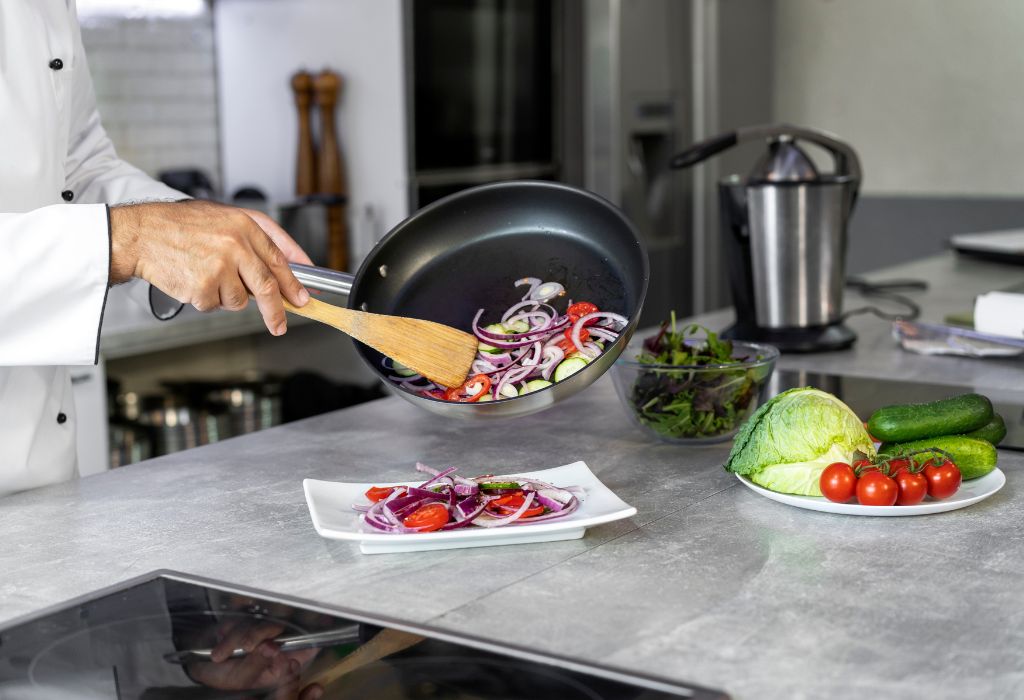
The demand for granite ceramic cookware continues to grow as more households look for safer and eco-friendly cooking solutions. Manufacturers are focusing on PFAS-free and non-toxic coatings to meet stricter global health and safety standards.
Innovations in ceramic technology are making coatings more durable and resistant to scratching, extending the lifespan of cookware. Some brands are even exploring reinforced ceramic layers to withstand higher heat without losing nonstick performance.
Sustainability is also becoming a priority. Companies are shifting toward recyclable materials and energy-efficient production methods, reducing environmental impact while improving product safety.
With rising awareness of chemical safety in kitchens, future cookware lines will likely carry more transparency in labeling, clearer temperature guidelines, and stronger warranties to give consumers confidence in long-term use.
These trends indicate that granite ceramic cookware will continue evolving into safer, more reliable, and more environmentally responsible options for modern kitchens.
Conclusion
Granite ceramic cookware has become a popular choice for families wanting safer and healthier cooking solutions. With PFAS-free, PFOA-free, and lead-free coatings, it offers a non-toxic alternative to older nonstick options.
When used correctly at moderate heat and maintained with proper cleaning methods, granite ceramic cookware provides durability, convenience, and peace of mind for everyday cooking.
However, choosing certified products from reputable brands and replacing damaged pans when needed is essential to keep meals safe and cookware performance consistent over time.
As manufacturing technology advances and safety standards tighten, granite ceramic cookware will likely become even more reliable, sustainable, and accessible for modern households.
For now, it remains a smart choice for safe, efficient, and stylish cooking when paired with the right care and responsible use.
I’m Emma J. Caldwell, the founder, lead writer, and home-cooking enthusiast behind KitchenGuideCo.com. With a background in culinary arts and over a decade of cooking experience in both professional and personal kitchens, I created this platform to demystify recipes, offer smart kitchen gadget reviews, and guide readers through meal prep with confidence and clarity.

